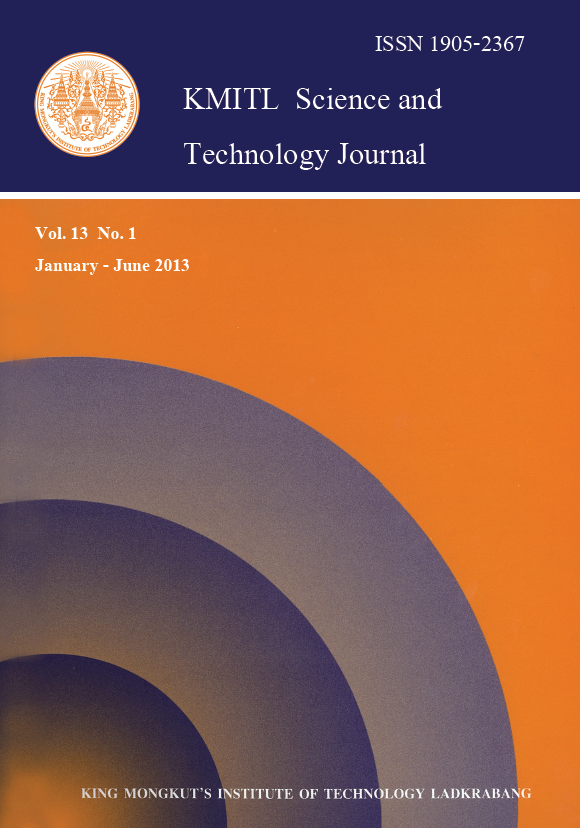Modeling for Conversion of Two-phase Esterification for Biodiesel Production
Main Article Content
Abstract
The conversion of two-phase esterification was performed with the employment of two approaches whereby in the first approach, pseudo-homogeneous phase was assumed and deviation from the experimental data was noticeably observed; and to overcome the drawback, in the second approach, vapor-liquid equilibrium (VLE) was accounted for using ASPEN PLUS and the reaction was allowed to occur in small-time steps using the fatty acid catalyzed kinetics model prior to subsequent VLE calculation. It is assumed in the second approach that transfer between the phases would be faster than the reaction in the separate phases. The outcomes of the second approach show good agreement between the calculated conversion and experimental esterification data in the presence of two phases.
Keyword: Esterification, Biodiesel, Conversion Modeling, Vapor-Liquid equilibrium
Email: kptanawa@kmitl.ac.th
Article Details
Copyright Transfer Statement
The copyright of this article is transferred to Current Applied Science and Technology journal with effect if and when the article is accepted for publication. The copyright transfer covers the exclusive right to reproduce and distribute the article, including reprints, translations, photographic reproductions, electronic form (offline, online) or any other reproductions of similar nature.
The author warrants that this contribution is original and that he/she has full power to make this grant. The author signs for and accepts responsibility for releasing this material on behalf of any and all co-authors.
Here is the link for download: Copyright transfer form.pdf
References
[2] T. Pinnarat and P.E. Savage, “Noncatalytic esterification of oleic acid in ethanol,” The Journal of Supercritical Fluids, vol. 53, 2010, pp. 53–59.
[3] E.C. Carlson, “Don't gamble with physical properties for simulations,” Chemical Engineering Progress, vol. 92, 1996, pp. 35–46.


